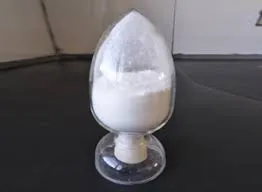Municipal water treatment is a critical process that ensures the safety and quality of drinking water supplied to communities. To achieve this, various chemicals are employed at different stages of the treatment process. Understanding these chemicals is key to appreciating how water is purified and made safe for consumption.
One of the primary chemicals used in water treatment is chlorine. Chlorine is a powerful disinfectant that eliminates harmful bacteria, viruses, and other pathogens that may be present in raw water sources. Typically, chlorine is added after the coagulation and flocculation processes, where larger particles are removed. While chlorine effectively disinfects, it is essential to manage its levels carefully to avoid the formation of harmful byproducts, such as trihalomethanes, which can pose health risks.
Another important chemical is alum, which is a type of coagulant. Alum helps to bind tiny particles and impurities in the water, allowing them to clump together and form larger aggregates, known as flocs. This process enhances the removal of sediment and organic matter during sedimentation, making the subsequent filtration process more efficient.
Additionally, lime is frequently added to adjust the pH of the water. Maintaining the appropriate pH is crucial as it affects the solubility of various minerals and metals. By adding lime, treatment facilities can stabilize the water, reduce corrosion in pipes, and improve the effectiveness of disinfection processes.
what chemicals are used in municipal water treatment

In some instances, coagulants such as polyaluminum chloride (PAC) are also employed
. PAC works similarly to alum but can be more effective in certain conditions and has a reduced tendency to produce sludge, thus improving overall treatment efficiency.Furthermore, activated carbon is used for adsorption of organic contaminants and taste and odor compounds in the water. This method effectively removes chlorinated organic compounds and enhances the aesthetic quality of drinking water.
Lastly, post-treatment chemicals, such as phosphates, may be added to inhibit the release of lead and copper from pipes, ensuring that the treated water remains safe as it travels through the distribution system.
In summary, the chemicals used in municipal water treatment play vital roles in purifying water, making it safe for public consumption. From disinfectants like chlorine to coagulants and pH adjusters, each chemical serves a specific purpose in the multi-step process of water treatment, safeguarding public health and ensuring access to clean drinking water.

